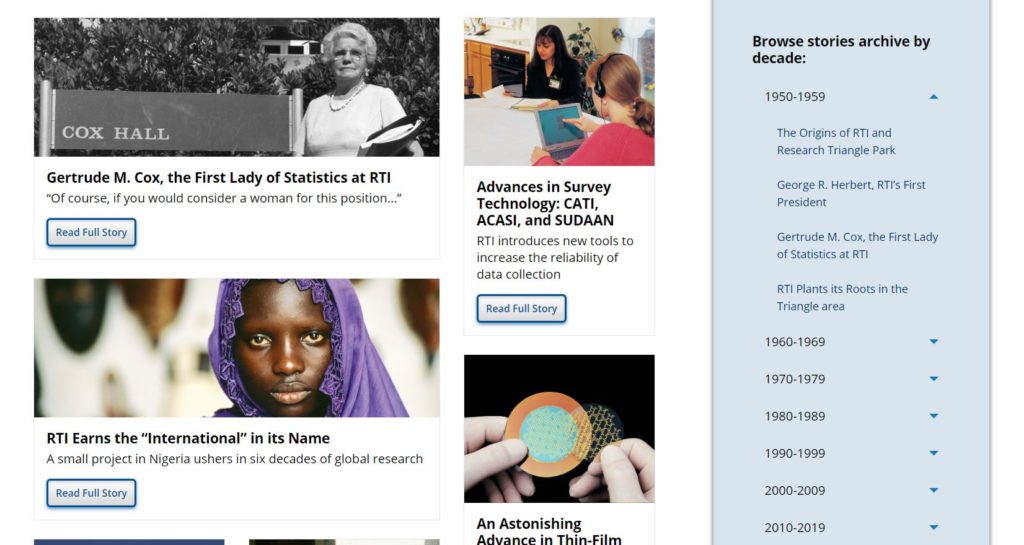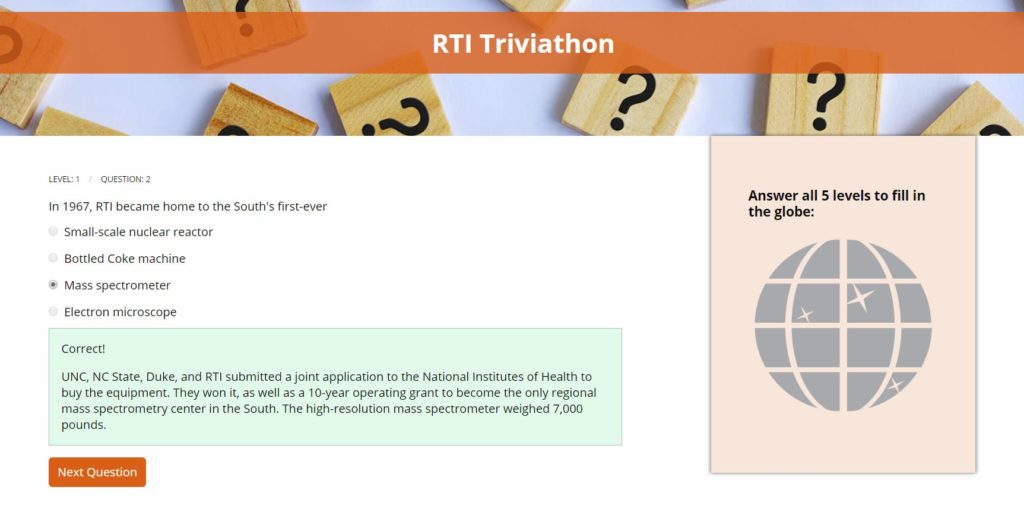For the 60th Anniversary of RTI International, celebrated in 2019, I assembled a complete history of RTI in 60 separate stories, and then created a trivia quiz based on the posted content.



Examples of corporate communications pieces written by Bob Strauss.
For the 60th Anniversary of RTI International, celebrated in 2019, I assembled a complete history of RTI in 60 separate stories, and then created a trivia quiz based on the posted content.



This is a proof-of-concept for a page explaining how the National Toxicology Program (NTP) works. While the information on this page accurately conveys NTP’s mission, it should not be considered an official NTP document.
PIEThe HeartRescue Global Project
The Indonesia Ready-to-Work Accelerator Program
Addicted to Hate: Understanding the Motives of Former White Supremacists
Effective Water, Sanitation, and Hygiene Services in Nigeria (E-WASH)
The Nile River Basin Initiative
Monitoring and Forecasting Reservoir Levels in the Panama Canal
How Blockchain Can Help Victims of Domestic Violence
Environmental Influences on Child Health Outcomes (ECHO)
The Newborn Screening MPS I Pilot Program
Southeast Area Technical High School (SEA-Tech)
Cost-Benefit Analysis of a Safe Consumption Site in San Francisco
The Residential Energy Consumption Survey
Reducing Noncommunicable Disease Risk Factors in Adolescents
Encouraging Healthy Eating Among Indian Adolescents
Improving NASA Satellite Data with Low-Cost Sensors
Competency-Based Education and Project-Based Learning
Detecting Organic Gunshot Residues
The National Longitudinal Study of Adolescent to Adult Health (ADD Health)
Metagenomic Analysis of Lemurs in Madagascar
Building Low-Emission Alternatives to Develop Economic Resilience
At any given moment, the National Aeronautics and Space Administration (NASA) has about two dozen Earth Observation Satellites in orbit. Instruments such as the Moderate Resolution Imaging Spectroradiometer (MODIS) aboard the Terra and Aqua satellites monitor levels of atmospheric aerosols, including both small and large particles of dust, ash, black carbon, industrial pollutants, and other substances. It is especially important to monitor the concentrations, and sources, of tiny particulate matter (PM2.5), particles smaller than 2.5 micrometers in size that can adversely affect human health, causing or exacerbating conditions like asthma and heart disease. Read Improving NASA Satellite Data with Low-Cost Sensors

The longest river in the world, the Nile spans 35 degrees of latitude, drains three million square kilometers of land (one-tenth of the total surface area of Africa), and runs through 11 countries whose combined population totals over 300 million people: Egypt, Ethiopia, Eritrea, Kenya, Rwanda, Burundi, Tanzania, Uganda, Sudan, South Sudan, and the Democratic Republic of the Congo. The Nile’s primary water source, Lake Victoria, is the world’s second-largest body of fresh water, and the Nile Delta in northern Egypt covers over 150 miles of the Mediterranean coastline. Read The Nile River Basin Initiative

What are the social, economic, and biological factors during adolescence and young adulthood that lead to chronic disease and poor health outcomes later in life? This is the kind of question that can only be answered by a longitudinal study—that is, a study that tracks a representative cohort of individuals over years, or even decades, assessing their health status at periodic intervals and drawing carefully weighted conclusions from the results. Read The National Longitudinal Study of Adolescent to Adult Health
